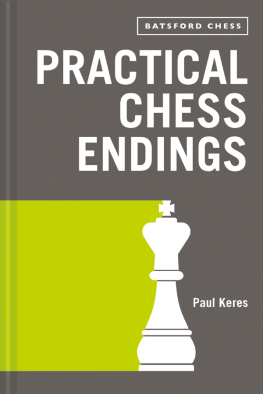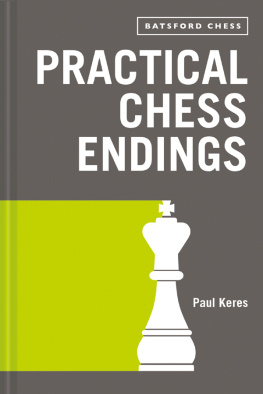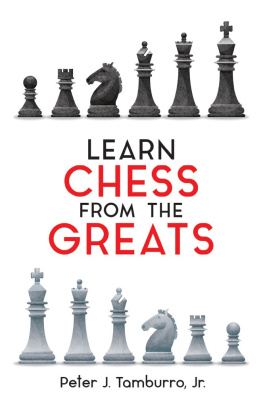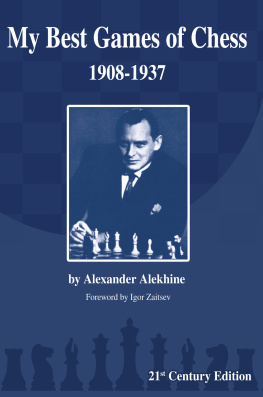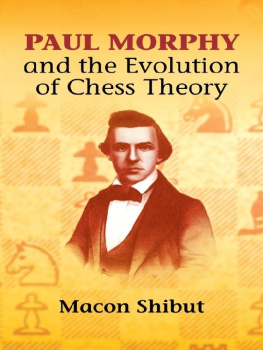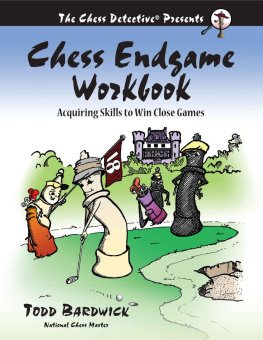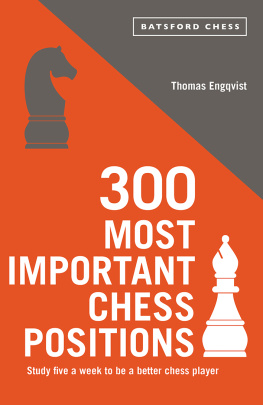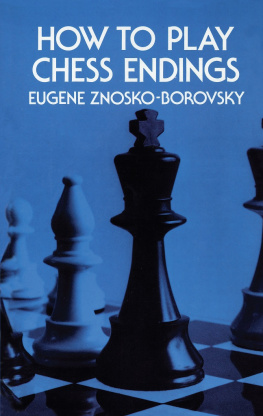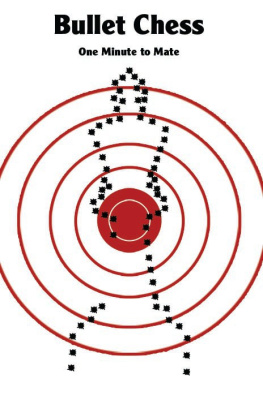Paul Keres - Practical Chess Endings
Here you can read online Paul Keres - Practical Chess Endings full text of the book (entire story) in english for free. Download pdf and epub, get meaning, cover and reviews about this ebook. year: 1974, publisher: Pavilion Books, genre: Children. Description of the work, (preface) as well as reviews are available. Best literature library LitArk.com created for fans of good reading and offers a wide selection of genres:
Romance novel
Science fiction
Adventure
Detective
Science
History
Home and family
Prose
Art
Politics
Computer
Non-fiction
Religion
Business
Children
Humor
Choose a favorite category and find really read worthwhile books. Enjoy immersion in the world of imagination, feel the emotions of the characters or learn something new for yourself, make an fascinating discovery.
- Book:Practical Chess Endings
- Author:
- Publisher:Pavilion Books
- Genre:
- Year:1974
- Rating:3 / 5
- Favourites:Add to favourites
- Your mark:
- 60
- 1
- 2
- 3
- 4
- 5
Practical Chess Endings: summary, description and annotation
We offer to read an annotation, description, summary or preface (depends on what the author of the book "Practical Chess Endings" wrote himself). If you haven't found the necessary information about the book — write in the comments, we will try to find it.
Practical Chess Endings — read online for free the complete book (whole text) full work
Below is the text of the book, divided by pages. System saving the place of the last page read, allows you to conveniently read the book "Practical Chess Endings" online for free, without having to search again every time where you left off. Put a bookmark, and you can go to the page where you finished reading at any time.
Font size:
Interval:
Bookmark:

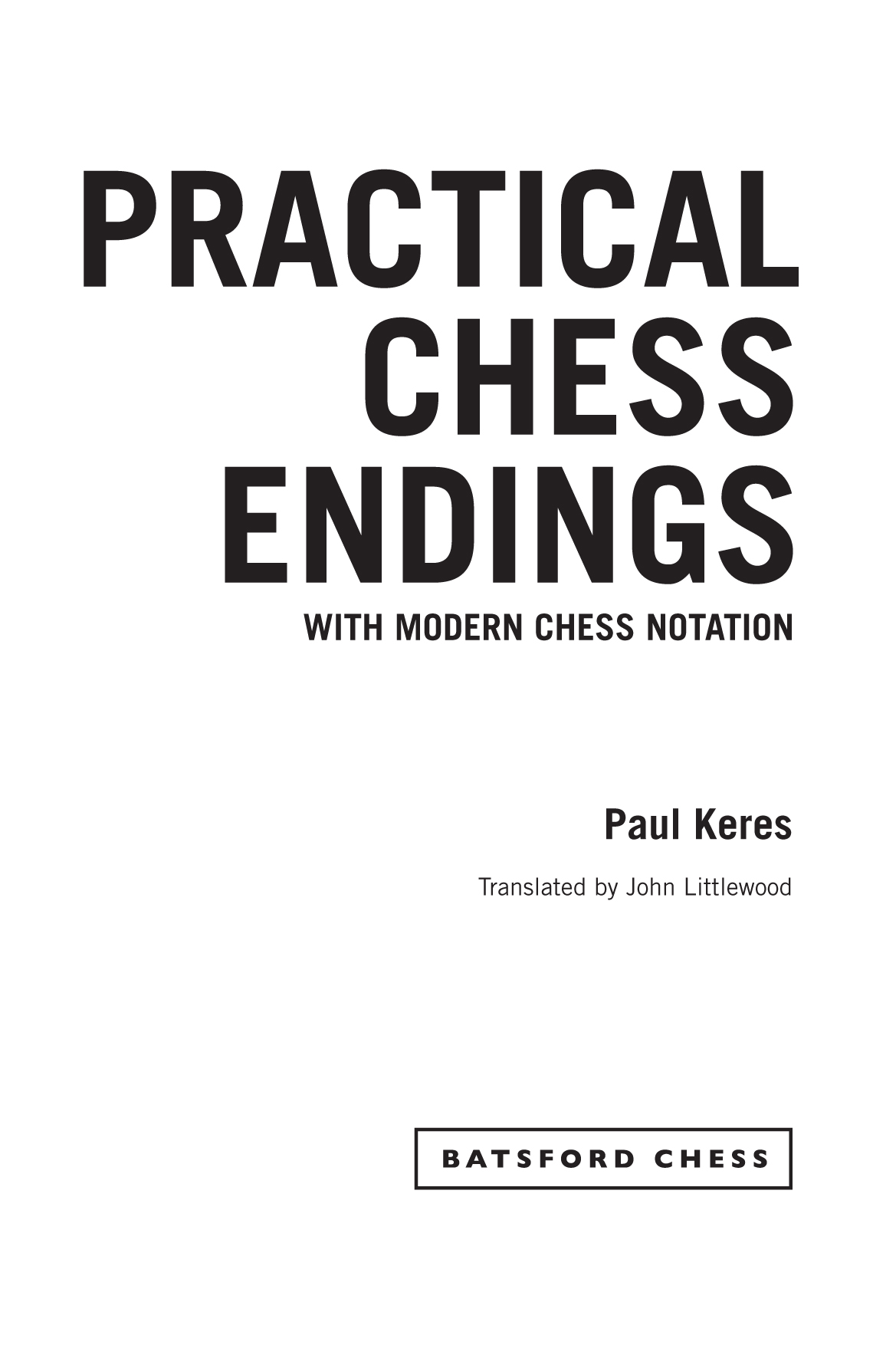
In chess literature throughout the world countless books have been written on opening theory, the middlegame, chess tournaments and game selections. Within this vast production, however, books on the endgame are comparatively few in number, despite the fact that this is one of the most important parts of the game of chess.
It is indeed difficult to overestimate the value of good endgame play and time spent on this department is amply repaid. The purpose of this book is to give the reader practical help in endgame technique.
Many chess players are averse to studying the endgame, in the belief that it is boring. To a certain extent they are right, for most theoretical endings are relatively dry in content, requiring precise calculation and offering few opportunities for individual flights of imagination. Nevertheless, there is much of interest in this phase of the game, and all chess players should strive to improve their play by mastering the necessary technique.
In order to pinpoint basic principles, I have decided to cut down on the number of examples but to examine them in greater detail than is customary. In this way I hope to make endgame theory a little more palatable. This has necessarily led me to reject many purely theoretical analyses and restrict myself to material which will be of most benefit to the practical player.
In offering this volume to the reader I hope not only to stimulate interest in the subject matter but principally to raise the average level of endgame technique among chess players everywhere.
Paul Keres
Tallinn, July 1972
A normal game of chess usually consists of three phases; opening, middlegame and ending. In the opening a player attempts to develop his forces in the most effective manner and create favourable middlegame chances. The middlegame is the richest and apparently the most difficult part of the game, in which the player aims for a decisive superiority or at least an advantageous endgame. And, finally, the ending is that part of the game in which we must convert into a win any advantages won during the opening or middlegame.
As a result, it is clear that the ending is one of the most critical stages of the game. A player can sometimes afford the luxury of an inaccurate move, or even a definite error, in the opening or middlegame without necessarily obtaining a lost position. This is explained by the fact that in both these complicated phases of the game there are great practical difficulties in detecting and exploiting our opponents mistakes. In the endgame, on the other hand, an error can be decisive, and we are rarely presented with a second chance.
There could be no clearer proof of the vital need to perfect ones endgame technique. The worlds leading chess players pay special attention to this aspect of their game, and we can find numerous modern examples of finely conducted endgames.
It must be admitted that, from a purely technical point of view, endings are much less interesting to study than, for example, opening theory or the strategy of the middlegame. However, this study is essential, and there is at least the advantage that most endings lend themselves to exact analysis of winning or drawing possibilities.
In the following pages, we shall attempt to provide the reader with the most important principles for the correct handling of various practical endings. We all know that present endgame theory in its entirety would fill many hefty tomes, the mere sight of which is a deterrent. The aim of this book, therefore, is to lighten the burden somewhat by selecting from the vast material available those endings which are of most practical value. For example, we shall be examining all basic endgame positions, presenting an indispensable ABC of chess usage. Do not underrate such an approach. Even great players have been known to have weaknesses in this phase of the game.
In this section we shall examine positions which in fact belong to the ABC of every player and scarcely need any further elucidation. However, we mention them briefly here for the sake of completeness, first of all looking at the force required to mate a lone king.
King and Queen against King
This is always a win, the only danger being a possible stalemate.

One possible winning method from is the following: 1 c3 e4 2 b7 d5 The black king obviously wishes to remain in the centre as long as possible. 3 c7 e4 4 d6 f4 5 d3 g5 6 e5 g4 7 e3 h5 8 f5 h4 9 d3 h5 10 h3 mate.
This is perhaps not the shortest way, 1 b7 being possibly quicker, but the given method shows how easily the enemy king can be mated in such positions.
King and Rook against King
This too is always a win. As in the above example, the enemy king must be driven to the edge of the board before he can be mated, although the task is slightly more difficult. Whilst the queen can drive the king to the edge without the help of its own king, it is essential for the rook and king to co-ordinate their action to achieve this aim.

In , Whites task is not especially difficult. In order to force the black king to the side of the board, it is simplest to cut off the king by using the rook along the rank or the file, beginning with 1 a4 or 1 e1. However, as no further progress can be made without the help of the white king, the clearest method is 1 b7 e4 2 c6 d4 3 e1 To force the enemy king towards the a-file. 3 ... c4 4 e4+ d3 5 d5 Now the black king is denied access to both the e-file and the fourth rank. 5 ... c3 6 d4 c2 7 c4 b2 8 d2+

8 c1 The king already has to go to the back rank. 9 c3 b1 10 b3 c1 11 d3 b1 12 d1 mate. Note especially the use of waiting moves by the rook.
King and two Bishops against King
It is clear that king and one bishop cannot possibly mate a lone king, but two bishops easily force the win, as can be seen in the play from .

The winning procedure is the same as in the previous examples. The black king is gradually driven to the edge of the board by coordinating the bishops to control its escape squares. The following line of play is readily understandable: 1 b2 e4 2 c3 d5 3 f3+ e5 4 g3+ e6 5 d4 The black king is now completely cut off by the bishops and can easily be forced into the corner. 5 ... f5 6 d5 f6 7 g4 g5 8 d7 f6 9 h4+ g6

Font size:
Interval:
Bookmark:
Similar books «Practical Chess Endings»
Look at similar books to Practical Chess Endings. We have selected literature similar in name and meaning in the hope of providing readers with more options to find new, interesting, not yet read works.
Discussion, reviews of the book Practical Chess Endings and just readers' own opinions. Leave your comments, write what you think about the work, its meaning or the main characters. Specify what exactly you liked and what you didn't like, and why you think so.

